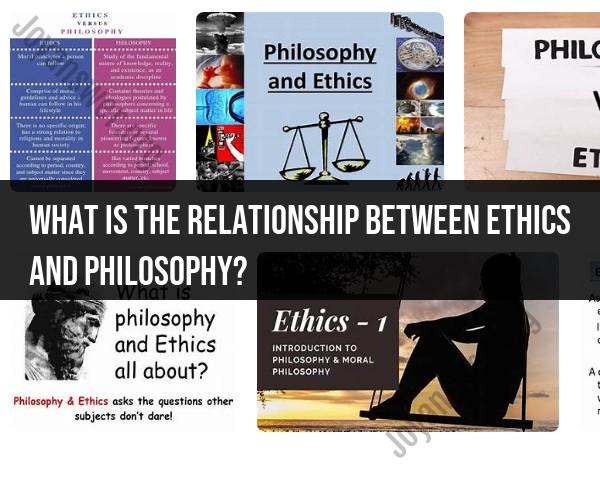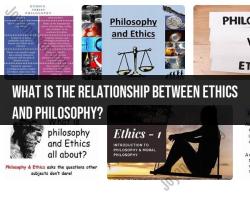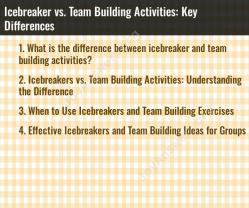What is the relationship between ethics and philosophy?
How to Conduct an Effective Ice Breaker Activity:
Ice breaker activities are essential for setting a positive and comfortable atmosphere in group settings, whether it's a meeting, workshop, seminar, or social gathering. Here are some tips on how to conduct an effective ice breaker activity:
Know Your Audience: Consider the preferences, backgrounds, and comfort levels of the participants. Choose an ice breaker that is appropriate for the group.
Set Clear Objectives: Determine the purpose of the ice breaker. Is it to introduce participants to one another, energize the group, or simply make people feel more comfortable? Clearly communicate the objectives to the group.
Keep it Simple: Choose ice breakers that are easy to understand and execute. You don't want participants to get confused or frustrated.
Create a Safe Environment: Encourage an open and non-judgmental atmosphere. Let participants know that it's okay to share and have fun.
Timing: Ice breakers should be relatively short, typically taking no more than 15-20 minutes. They are meant to be a warm-up, not the main event.
Variety: Vary your ice breakers to keep things interesting. Don't use the same one every time. This can also accommodate different personality types and preferences.
Engagement: Ensure that everyone participates. No one should feel left out. Modify the activity if necessary to accommodate all participants.
Debrief: After the ice breaker, briefly discuss the experience. What did participants learn? How did it make them feel? This can help connect the activity to the main objectives.
Respect Privacy: Some ice breakers involve sharing personal information. Be mindful that some participants may be uncomfortable with this, so make sure it's voluntary and that no one is pressured into sharing more than they are comfortable with.
Follow-Up: Use the connections made during ice breakers to enhance the main event or meeting. Reference shared experiences during discussions to create a sense of belonging.
Relationship between Ethics and Philosophy:
Ethics and philosophy are closely intertwined disciplines. Ethics is a branch of philosophy that deals with questions about what is morally right and wrong, and how we should live our lives. The relationship between ethics and philosophy can be summarized as follows:
Ethics as a Subfield of Philosophy: Ethics is a subfield of philosophy that is concerned with moral principles, values, and the justification of ethical beliefs. It seeks to provide rational and philosophical foundations for making moral judgments and decisions.
Moral Philosophy: Moral philosophy is a broader term that encompasses ethics. It involves the systematic study of morality, exploring questions about the nature of morality, moral principles, and the origins of ethical values.
Ethical Theories: Philosophers within the realm of ethics develop and analyze ethical theories, such as utilitarianism, deontology, virtue ethics, and consequentialism. These theories provide frameworks for evaluating moral dilemmas and guiding ethical behavior.
Metaethics: Metaethics is a subfield of philosophy that delves into the nature of moral concepts, such as good, evil, right, and wrong. It explores questions about the origin of moral values, moral language, and the nature of moral judgments.
Normative Ethics: Normative ethics is another branch of ethics that seeks to establish normative principles for determining what is morally right or wrong. It is concerned with practical guidance for ethical decision-making.
Applied Ethics: Applied ethics takes the principles and theories developed in ethical philosophy and applies them to specific real-world issues, such as medical ethics, business ethics, environmental ethics, and more.
In summary, ethics is a branch of philosophy that deals with moral questions and provides the philosophical foundation for understanding, evaluating, and making moral judgments. Philosophy, as a broader field, encompasses ethics and various other branches that explore fundamental questions about knowledge, reality, existence, and ethics.
Exploring the Interplay Between Ethics and Philosophy
Ethics and philosophy are two closely related fields of study. Ethics is the study of what is morally right and wrong, while philosophy is the study of knowledge, truth, and meaning. Ethics and philosophy overlap in many areas, such as the study of good and bad, virtue and vice, justice and crime, and right and wrong.
Philosophical inquiry can help us to better understand ethical concepts and dilemmas. For example, philosophers have developed different theories about the nature of morality, such as utilitarianism, deontology, and virtue ethics. These theories can provide us with frameworks for thinking about and resolving ethical problems.
The Deep Connection Between Ethics and Philosophical Inquiry
Ethics and philosophy are both concerned with fundamental questions about human life and existence. For example, both fields ask questions about what it means to be a good person, how we should live our lives, and what our obligations are to others.
Philosophical inquiry can help us to develop a more informed and reflective approach to ethical decision-making. By considering the different ethical theories and philosophical perspectives on moral issues, we can gain a deeper understanding of our own moral values and beliefs.
Prominent Ethical Theories and Philosophical Approaches
Some of the most prominent ethical theories and philosophical approaches include:
- Utilitarianism: This theory holds that we should act in ways that produce the greatest good for the greatest number of people.
- Deontology: This theory holds that we have certain moral duties and obligations that we must follow, regardless of the consequences.
- Virtue ethics: This theory focuses on developing and practicing virtues, such as courage, wisdom, and justice.
- Natural law theory: This theory holds that there are universal moral laws that are based on human nature.
- Kantian ethics: This theory focuses on the importance of duty and respecting the dignity of others.
- Feminist ethics: This theory examines the ways in which gender oppression and other forms of inequality impact our moral thinking and behavior.
Applying Philosophical Ethics to Real-Life Moral Dilemmas
Philosophical ethics can be applied to a wide range of real-life moral dilemmas. For example, we can use philosophical theories to think about issues such as:
- Abortion: Is it morally permissible to terminate a pregnancy?
- Euthanasia: Is it morally permissible to assist someone in dying?
- Animal rights: Do animals have moral rights?
- Environmental ethics: What are our moral obligations to the environment?
- Business ethics: What are the moral obligations of businesses and their employees?
- Social justice: What are our moral obligations to others in society?
The Ongoing Philosophical Discourse on Ethics
The philosophical discourse on ethics is ongoing and constantly evolving. Philosophers continue to develop new ethical theories and to challenge existing ones. This discourse is essential for helping us to think more critically and reflectively about ethical issues.
The study of ethics and philosophy can help us to become more ethical people. By understanding the different ethical theories and philosophical perspectives, we can develop our own moral values and beliefs. We can also use philosophical inquiry to think more critically and reflectively about ethical dilemmas.




